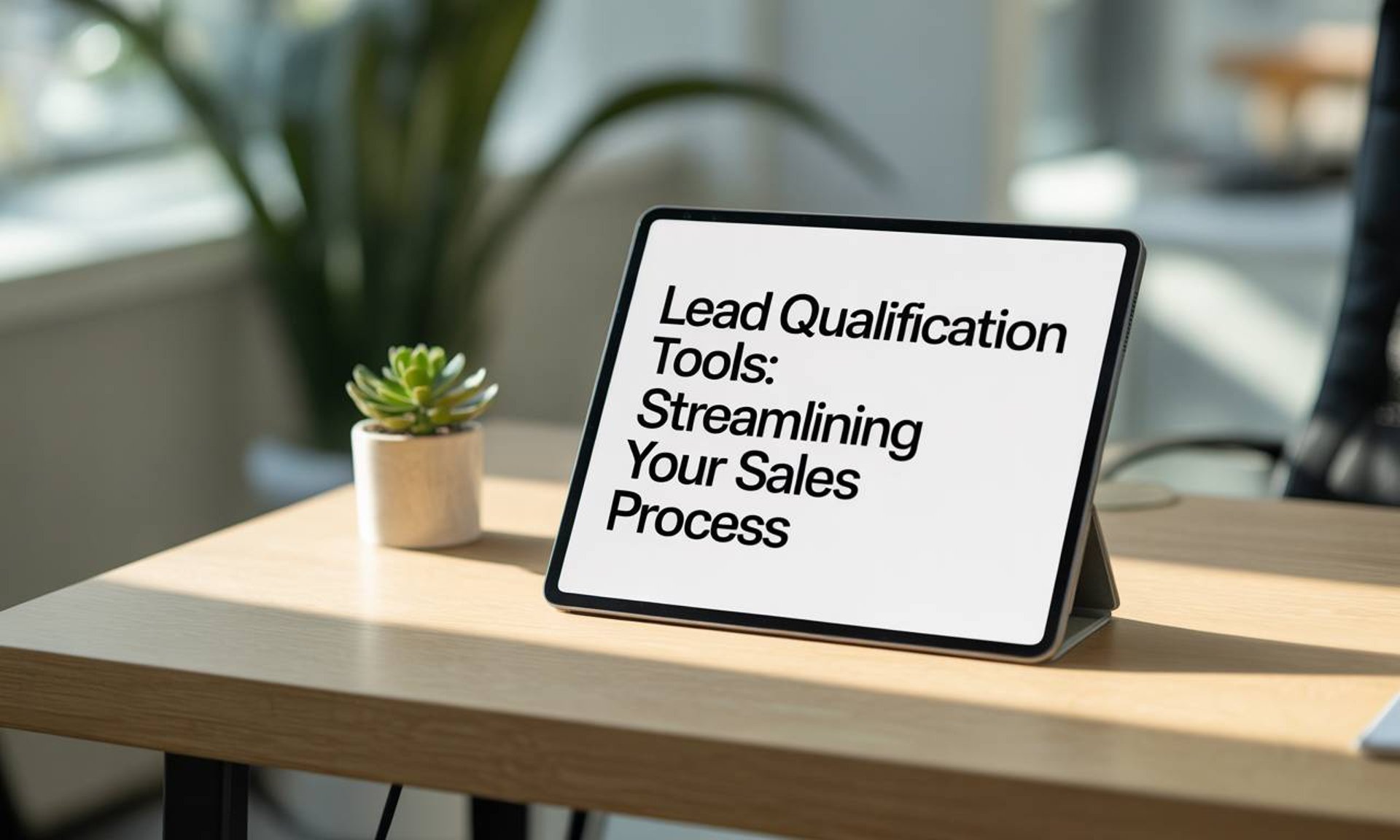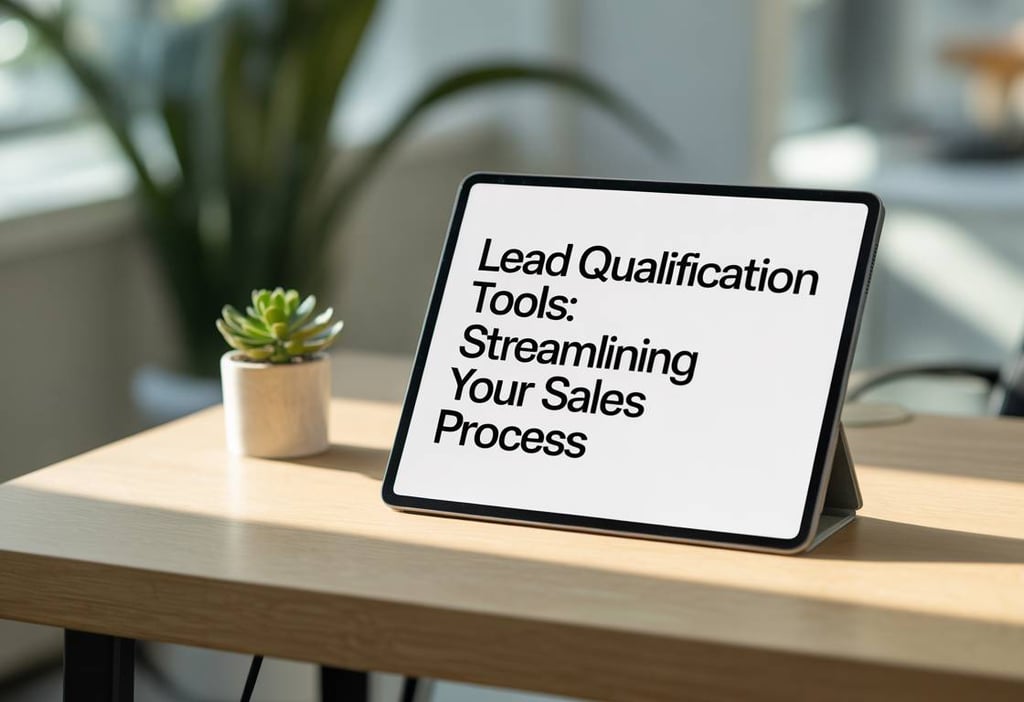Lead Qualification Tools: Streamlining Your Sales Process
Thinking of using lead qualification tools for your business growth? Learn how they help automate sales, improve collaboration, and drive higher conversion rates.
Lilo
7/29/20257 min read



Every industry faces some changes, which are more pronounced in the business sector. The blunt techniques that were once used in every business to acquire leads are no longer applicable. A business's lead acquisition systems demand technology at every stage to allocate and qualify.
As a modern-day sales strategy, businesses employ lead qualification tools, which help in discerning, sorting, and categorizing prospects in alignment with their interest levels. This ensures that efforts are directed towards prospects that deliver the highest ROI, thus conserving resources while increasing returns.
These changes can be observed by all the stakeholders in the firm and understand how the marketing and sales functions impact the firm's performance. The purpose of this article is to explain the functions and importance of these tools and provide strategies for implementation to maximize value for the seller.
What Are Lead Qualification Tools?
Lead qualification tools are specialized software programs intended for businesses to evaluate and classify leads. With these tools, businesses can fully automate the processes of capturing leads and evaluating them to differentiate between potential customers.
Most tools use a combination of data gathering, automation, and AI technologies to assist sales teams in judging how fit and how willing the leads are to engage.
Although different tools may have differing functionalities and features, almost all lead qualification tools have one central purpose: enabling optimal engagements and improving conversion rates by timely interaction from the sales team with the most appropriate leads.
The Role Of Lead Qualification And Lead Scoring In Sales
Exercising lead qualification is vital in the sales cycle. It enables businesses to stop wasting time pursuing unqualified leads. It allows the sales team to put their energy towards leads that have undergone a qualifying process and are deemed to be the most advantageous and most likely beneficial in a business deal.
Along with improving operational efficiency, this strategy also improves the probability of successfully closing deals and subsequently increasing revenue.
Most firms use two types of lead qualification frameworks:
1. BANT (Budget, Authority, Need, Timing): This old-school model evaluates potential clients based on their budget, decision-making capability, existing needs, and when they are ready to buy.
2. CHAMP (Challenges, Authority, Money, Prioritization): This more recent one looks into the prospective buyer’s unique challenges, their appointive power, budgetary allocation, and how they prioritize competing needs.
Using automated tools for lead qualification, sales teams are able to collect rich information that helps automate the processes and streamline lead identification based on how responsive and behavioral patterns.
Advantages of a Lead Qualification Tool
Using lead qualification tools, businesses are able to enjoy improved productivity, stronger conversion outcomes, and improved alignment within sales teams. Increased productivity stems from not having to pursue unqualified leads, as every decision is validated by data.
These are the primary benefits provided by lead qualification tools:
Better Efficiency in Automation of Scoring and Prioritization of Leads
Automation of lead scoring is perhaps the most impactful benefit provided by these systems. Using certain criteria like demographics, previous interactions, and potential future purchases, these systems assign a score to each lead.
With greater scores, the probability of conversion substantially increases. This form of automation ensures that sales teams are able to identify faster which leads require immediate attention and which ones will require more time to nurture.
Gathering and analyzing the Information has improved
Using a lead’s social media activity, emails, and even their website visits, lead qualification tools can aggregate information and identify patterns, interests, preferences, and behaviors to enhance the understanding of the lead over time. Having this knowledge assists businesses in creating messages and making custom offers aimed at converting prospects into lifelong customers.
Improved Efficiency with Selling Tasks
Sales teams no longer have to perform data entry and other repetitive tasks, which allows them to automate lead qualification. Because of this, sales reps can build relationships with relevant leads instead of trying to connect with uninterested prospects.
Furthermore, automation guarantees that all leads receive sufficient attention, eliminating the potential for human error problems.
Better Collaboration Between the Sales and Marketing Teams
These lead qualification systems help solve some of the issues between a company’s marketing and sales departments. Both teams can now work with the same data and assess the validity of leads.
While marketing is responsible for lead generation, it can actively send valid leads to sales through automated systems, thereby enabling effortless transitions. Improved combined effort improves the customer conversion rates and enhances inter-team collaboration.
Managing Leads Efficiently
Some leads take longer to convert, and businesses can classify them using lead qualification tools. For instance, leads in the research phase need to be nurtured with educational content and automated emails. More engaged leads are passed to the sales team for direct outreach. This additional segmentation helps businesses refine their advertising campaigns.
Core Functions of Lead Qualification Tools
A company’s evaluation accuracy can be greatly improved with the help of lead qualification tools through automation. With different tools having different capabilities, most modern solutions differ only in the following core functions:
Automated Scoring of Each Lead
One of the most significant features of lead qualification tools is automated scoring of leads. This tool scores leads based on their interactions with the business, demographics, and purchase intentions.
Each of these factors is assigned a score, and depending on the overall score, the chances of conversion either improve or deteriorate.
Tracking Behaviors
Behavior tracking defines the qualifications of the interaction and engagement with the website, emails, social networks, and other digital touchpoints. Analyzing this information reveals the leads’ interests and what they plan to do business-wise.
For instance, consider leads who repeatedly access certain pages or download materials related to a specific service. Such leads are likely more engaged and can be targeted with outreach.
Flexible Qualification Standards
Each business has a unique set of qualifications that identifies a lead. With qualification tools, businesses are now able to modify their sales funnel and set custom qualification criteria. One may, for instance, set geo-targets, focus on particular industries, or set priorities for a certain net-priced budget submitted by the prospects.
Customer Relationship Management (CRM) Integration
For businesses seeking to merge their lead data, the integration of qualification tools with customer relationship management systems (CRM) becomes pivotal.
With such integration, the marketing, sales, and customer service teams of the business can work collaboratively on the leads, armed with real-time data and the organization’s information systems.
Integration aids in tracking a lead's position and facilitates the marking of nurturing actions so that leads do not get ‘lost’ midway through intermediate nurturing processes.
Reporting and Analytics
Most lead qualification tools are equipped with analytics and reporting features, assisting organizations in determining the effectiveness of their qualification processes.
These tools capture data on conversion rates, engagements with the leads, and the performance of various campaigns over a specified time frame. This information helps businesses to refine their lead qualification processes and techniques, thereby ensuring that efforts to pursue leads are directed at the most valuable ones.
Implementing Lead Qualification Tools
As illustrated in the following structured steps that aim at successful execution, the effectiveness of lead qualification tools can be undermined due to poor structuring.
Define Your Lead Criteria
In utilizing a lead qualification tool, a company needs to define what qualifies as a lead. What actions must be accomplished for a lead to be deemed actionable? These conditions would assist in designing the scoring and automation components of the tool.
Some parameters to define are: age, occupation, prior engagements, financial status, and intent to purchase.
Choose the Right Tool
Different businesses have different considerations when choosing a lead qualification tool. While some may look at the level of automation offered, others may consider the size of the sales team or even the complexity of the sales funnel.
Make sure that the tool you choose meets your prerequisites and is compatible with your CRM, alongside offering advanced reporting with customizable metrics on grading leads.
Train Your Sales and Marketing Personne
Once the tool has been chosen, conduct training sessions with the marketing and sales teams so they can better prepare. Both teams must grasp at the very least the fundamentals of the tool’s operation, its ecosystems, workflows, grading systems, and business processes to make educated choices.
Having both teams knowledgeable about the processes helps them jointly strategize on enhancing conversion rates.
Refine Your Qualification Procedure Relentlessly
Mechanical processes do not lead to improvement in business innovation. The same goes for lead qualification. With growth comes change, there is always potential for improvement.
Each iteration should implement new data and insights for maximum precision in lead scoring. Evaluate how well training objectives have been met and your company goals, then fine-tune as necessary.
Common Mistakes to Avoid
Having said that, lead qualification tools can be of immense help to a business, there are certain mistakes that companies need to avoid. One of the most common mistakes is qualifying criteria that is too sophisticated.
Trying to add more criteria leads to processes becoming more complicated. It is worth concentrating on the simpler but impactful sales drivers.
Another mistake many companies make is separating sales from marketing. If marketing qualifies leads by different criteria, there is a big chance that either the qualified leads might disappear, or the sales team ends up chasing unqualified leads. Collaborating with both teams is fundamental to effective lead qualification.
Conclusion
These days, a good lead qualification tool is essential for any business. Such a tool helps minimize manual work as well as automates the sales process, thereby improving operational efficiency. With automated lead qualification, sales teams can allocate their resources to the top leads, and this tends to improve the sales and conversion rates.
Companies can work on improving their outreach and interaction, while automation helps in analyzing lead behavior. With proper foresight, new lead qualification technologies can drastically transform sales processes and accelerate growth.




Contact us
Whether you have a request, a query, or want to work with us, use the form below to get in touch with our team.


Location
3721 Single Street
Quincy, MA 02169
Hours
I-V 9:00-18:00
VI - VII Closed
Contacts
javier@smarterpath.ai
mariano@smarterpath.ai
+1 (917) 684-3554
Copyright © 2025 SmarterPath. All rights reserved.
